Home>Furniture>Outdoor Furniture>How Big Should Patio Be
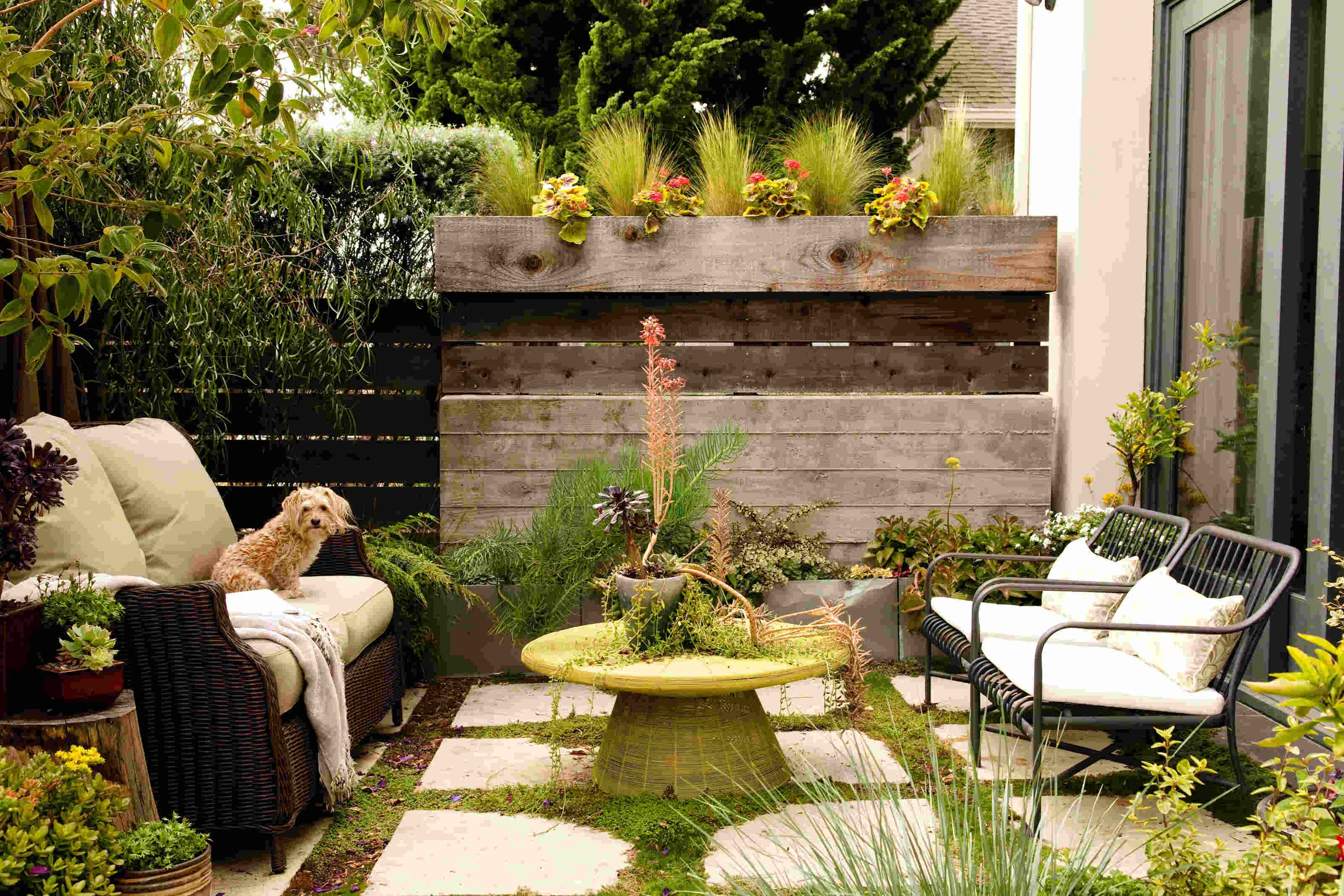

Outdoor Furniture
How Big Should Patio Be
Modified: March 7, 2024
Discover the perfect patio size for your outdoor furniture. Find out how big your patio should be to accommodate comfortable seating and create an inviting outdoor space.
(Many of the links in this article redirect to a specific reviewed product. Your purchase of these products through affiliate links helps to generate commission for Storables.com, at no extra cost. Learn more)
Introduction
Welcome to the world of outdoor living! One of the key elements of creating a perfect outdoor space is the patio. The patio serves as a versatile and functional area where you can relax, entertain guests, and enjoy the great outdoors. But when it comes to designing and building a patio, one important question arises: how big should it be?
Determining the size of your patio is crucial, as it sets the foundation for the entire outdoor space. It’s essential to strike the right balance between having enough room to accommodate your needs and ensuring the patio doesn’t overpower the rest of your outdoor environment. In this article, we will explore the factors to consider when determining the size of your patio and provide some recommended guidelines to help you make an informed decision.
Key Takeaways:
- Patio size should be determined based on available space, functionality, furniture requirements, outdoor activities, personal preferences, and lifestyle to create a comfortable and enjoyable outdoor living space.
- Small, medium, and large patios offer different design considerations, from maximizing vertical space to creating distinct zones, to cater to various activities and enhance the outdoor experience.
Read more: How Big Should A Patio Rug Be
Factors to Consider When Determining Patio Size
1. Available Space: The first thing to consider is the amount of space you have available for your patio. Assess the dimensions of your outdoor area and take into account any existing landscaping features or structures that you want to integrate into your patio design.
2. Functionality and Purpose: Think about how you plan to use your patio. Will it primarily be a space for relaxation and lounging, or do you envision using it for outdoor dining and entertaining? The intended purpose of your patio will influence its size.
3. Furniture and Seating Requirements: Consider the number and size of furniture pieces and seating arrangements you plan to have on your patio. Do you have a large dining set or a cozy seating area with lounge chairs? Ensuring you have enough space to accommodate your furniture is essential for comfort and functionality.
4. Outdoor Activities and Entertainment: If you enjoy hosting outdoor gatherings or have specific outdoor activities in mind, such as yoga or gardening, you must allocate enough space to accommodate these activities comfortably.
5. Personal Preferences and Lifestyle: Ultimately, your patio should reflect your personal style and cater to your lifestyle. Consider your preferences, such as having an open space for children to play, incorporating specific design elements, or creating separate zones for different activities.
Key Takeaways:
- Patio size should be determined based on available space, functionality, furniture requirements, outdoor activities, personal preferences, and lifestyle to create a comfortable and enjoyable outdoor living space.
- Small, medium, and large patios offer different design considerations, from maximizing vertical space to creating distinct zones, to cater to various activities and enhance the outdoor experience.
Read more: How Big Should A Patio Rug Be
Factors to Consider When Determining Patio Size
When it comes to determining the size of your patio, there are several factors that you need to take into consideration. By evaluating these factors, you can ensure that your patio meets your needs and provides a comfortable and functional outdoor space.
1. Available Space: The first factor to consider is the amount of space you have available in your outdoor area. Measure the dimensions of the space where you plan to build the patio and take into account any existing landscaping features or structures that you want to incorporate. It’s essential to have a clear understanding of the available space so that your patio fits seamlessly into the overall design.
2. Functionality and Purpose: Think about how you plan to use your patio. Will it primarily be a place for relaxation and lounging, or do you envision using it for outdoor dining and entertaining? The intended purpose of your patio will influence its size. If you plan to entertain guests frequently, you may need a larger patio to accommodate seating and dining areas. On the other hand, if you prefer a cozy and intimate space, a smaller patio might be more suitable.
3. Furniture and Seating Requirements: Consider the number and size of furniture pieces and seating arrangements you plan to have on your patio. Do you have a large dining set or a cozy seating area with lounge chairs? Ensure that you have enough space to comfortably fit your furniture and allow for easy movement. Keep in mind that you should leave ample space around furniture pieces for people to walk around without feeling cramped.
4. Outdoor Activities and Entertainment: Think about the activities you enjoy doing outdoors and whether you want to incorporate them into your patio space. If you enjoy cooking and grilling, you may need to allocate space for a barbecue area or an outdoor kitchen. If you have children or pets, you might want to leave room for play or have a dedicated space for them. Additionally, if you enjoy gardening or other outdoor hobbies, make sure to allocate space for these activities as well.
5. Personal Preferences and Lifestyle: Your personal preferences and lifestyle should also play a role in determining the size of your patio. Consider your design preferences, such as whether you prefer a minimalistic or elaborate design. Think about the overall aesthetics of your outdoor space and how your patio will integrate with the existing landscape. Additionally, think about your lifestyle and how the patio will enhance your outdoor experience. If you enjoy hosting gatherings or spending time outdoors with friends and family, you may want to prioritize a larger patio that can accommodate more people.
By carefully considering these factors, you can determine the ideal size for your patio. Remember that it’s essential to find the right balance between having enough space for your needs and ensuring that the patio doesn’t overpower the rest of your outdoor environment. With a well-designed patio, you can create an inviting and comfortable outdoor space that you’ll enjoy for years to come.
Key Takeaways:
- Patio size should be determined based on available space, functionality, furniture requirements, outdoor activities, personal preferences, and lifestyle to create a comfortable and enjoyable outdoor living space.
- Small, medium, and large patios offer different design considerations, from maximizing vertical space to creating distinct zones, to cater to various activities and enhance the outdoor experience.
Read more: How Big Should A Patio Rug Be
Factors to Consider When Determining Patio Size
– Available Space
One of the primary factors to consider when determining the size of your patio is the available space in your outdoor area. This factor sets the foundation for your patio design and ensures that it fits seamlessly into your overall landscape.
Start by measuring the dimensions of the area where you plan to build your patio. Take into account any existing structures, such as trees, fences, or gardens, that you want to incorporate into the patio’s layout. These elements can add character and charm to your outdoor space while also dictating the size and shape of your patio.
Additionally, consider the orientation and shape of your available space. Is it a rectangular area, or does it have irregular dimensions? Understanding the shape and layout of the space will help you make better decisions regarding the size and placement of your patio.
Another critical aspect to consider is the scale and proportion of your patio in relation to the rest of your outdoor area. You want your patio to feel harmonious and balanced with the surrounding landscape. If you have a small garden or limited space, an oversized patio might overpower the area and make it feel cramped. On the other hand, if you have a large yard, a tiny patio might get lost in the vastness of the space.
Take the time to visualize how the patio will look within the available space. Consider the flow and connectivity between the patio and other outdoor features, such as walkways, gardens, or swimming pools. Aim for a design that creates a cohesive and integrated outdoor living environment.
Remember to leave some space around the edges of the patio for landscaping and planting. This not only softens the overall look but also allows for future expansion or modifications if desired.
Ultimately, the available space is a crucial factor in determining the size of your patio. By understanding the dimensions, shape, and overall layout of your outdoor area, you can create a patio that maximizes the available space while enhancing the beauty and functionality of your outdoor living space.
Key Takeaways:
- Patio size should be determined based on available space, functionality, furniture requirements, outdoor activities, personal preferences, and lifestyle to create a comfortable and enjoyable outdoor living space.
- Small, medium, and large patios offer different design considerations, from maximizing vertical space to creating distinct zones, to cater to various activities and enhance the outdoor experience.
Read more: How Big Should A Patio Rug Be
Factors to Consider When Determining Patio Size
– Functionality and Purpose
When determining the size of your patio, it’s important to consider its functionality and purpose. How do you envision using your patio? Will it primarily serve as a place for relaxation and leisure, or do you plan on using it for outdoor dining and entertaining? The intended function and purpose of your patio will greatly influence its size.
If you’re looking to create a quiet oasis for relaxation, a smaller, more intimate patio might be suitable. This size will allow you to create a cozy and inviting atmosphere, perfect for lounging with a book or enjoying a cup of coffee in the mornings. Consider incorporating comfortable seating options and perhaps a small bistro table for added functionality.
On the other hand, if you frequently entertain guests or enjoy hosting outdoor gatherings, you may want to consider a larger patio. This will provide ample space for seating areas, dining tables, and additional features such as a fire pit or outdoor kitchen. A spacious patio will allow for easy circulation and create a welcoming environment for your guests.
Think about the specific activities you plan to do on your patio. If you’re an avid gardener, you may want to allocate space for potted plants, flower beds, or even a small greenhouse. If you have children or pets, consider leaving room for play areas or installing safety features such as fencing or gates.
Additionally, consider the overall aesthetics and style you wish to achieve with your patio. Are you going for a modern and minimalist design, or do you prefer a more traditional and rustic feel? The size of your patio will affect how different design elements are incorporated. A larger patio offers more flexibility in terms of layout, furniture placement, and decorative elements.
Ultimately, the functionality and purpose of your patio should align with your lifestyle and outdoor living needs. It should be a space that complements your activities and enhances your overall enjoyment of the outdoors. By considering these factors, you can determine the ideal size for your patio and create a space that perfectly suits your needs and preferences.
Key Takeaways:
- Patio size should be determined based on available space, functionality, furniture requirements, outdoor activities, personal preferences, and lifestyle to create a comfortable and enjoyable outdoor living space.
- Small, medium, and large patios offer different design considerations, from maximizing vertical space to creating distinct zones, to cater to various activities and enhance the outdoor experience.
Read more: How Big Should A Patio Rug Be
Factors to Consider When Determining Patio Size
– Furniture and Seating Requirements
When determining the size of your patio, one important factor to consider is the furniture and seating requirements. The size of your patio should be able to accommodate your desired furniture pieces and provide enough seating for you, your family, and any guests you plan to entertain.
Start by assessing the types of furniture you intend to have on your patio. Consider whether you’ll have a dining set, lounge chairs, benches, or any other seating options. Measure the dimensions of these furniture pieces to get an idea of how much space they will require. Ensure that you have enough room to arrange the furniture comfortably, leaving space to move around and also maintain a visually appealing layout.
When it comes to dining sets, consider the number of people you usually host for meals. If it’s just you and your immediate family, a smaller table with four chairs may suffice. However, if you often entertain large groups, you may need a more substantial dining set that can seat six or more people comfortably.
To create a cozy and inviting seating area, you may want to incorporate lounge chairs or outdoor sofas. Measure the dimensions of these pieces and determine how many you’ll need to accommodate your desired seating capacity. If you plan on placing a coffee table or side tables alongside the seating area, factor in their dimensions as well.
When arranging your furniture on the patio, ensure that there is enough space between the pieces to allow for comfortable movement. You don’t want your patio to feel overcrowded or cramped. Leaving some space between furniture sets or adding some open areas can help create a more spacious and airy feel.
Consider the flow of movement between different areas of the patio, especially if you’re incorporating multiple seating or dining areas. You’ll want to ensure that guests can move easily between the different spaces without any unnecessary obstacles or congestion.
Take into account any additional features you plan to include, such as a barbecue grill, outdoor bar, or storage chests. These elements will require their own designated space, so make sure to factor them into your patio size calculation.
By carefully considering the furniture and seating requirements, you can create a patio that provides comfort, functionality, and ample seating for you and your guests. A well-designed patio with the right furniture arrangement will enhance your outdoor experience and provide a space where you can relax and entertain with ease.
Key Takeaways:
- Patio size should be determined based on available space, functionality, furniture requirements, outdoor activities, personal preferences, and lifestyle to create a comfortable and enjoyable outdoor living space.
- Small, medium, and large patios offer different design considerations, from maximizing vertical space to creating distinct zones, to cater to various activities and enhance the outdoor experience.
Read more: How Big Should A Patio Rug Be
Factors to Consider When Determining Patio Size
– Outdoor Activities and Entertainment
When determining the size of your patio, it’s important to consider the outdoor activities and entertainment options you plan to incorporate. Your patio should provide enough space to accommodate your desired activities and create an enjoyable outdoor environment for you and your guests.
Think about the outdoor activities you enjoy or plan to engage in on your patio. Are you a yoga enthusiast who wants to practice sun salutations in the fresh air? Do you envision setting up a small garden or potting area for your green thumb? Are you interested in creating a dedicated area for outdoor games like cornhole or bocce ball? Consider how much space these activities will require and allocate enough room on your patio accordingly.
If you enjoy hosting outdoor gatherings and parties, you’ll want to ensure that your patio can accommodate your entertainment needs. Consider the space required for activities such as grilling and barbecuing, setting up a buffet table, or holding impromptu dance parties. You might want to include additional features like an outdoor bar or a designated area for a fire pit or bonfire, providing a focal point for socializing and creating a cozy ambiance.
For those who have children or pets, it’s important to include dedicated areas for play and relaxation. Leave enough open space on your patio for kids to run around, play games, or have a small playset or sandbox. Incorporate pet-friendly features such as a designated area for their bed or toys. If you have a swimming pool or plan to install one in the future, allocate space for poolside loungers and seating areas.
Consider how the outdoor elements, such as sunlight and shade, will impact your activities. If you plan on spending a lot of time on your patio during sunny days, you may want to incorporate shading options like umbrellas or pergolas. If stargazing or watching the sunset is a favorite pastime, ensure that your patio offers an unobstructed view of the sky.
By taking into account your desired outdoor activities and entertainment options, you can create a patio that enhances your outdoor lifestyle. Designate specific areas on your patio for different activities, ensuring that there’s enough space for everyone to enjoy their favorite pastimes comfortably. A well-designed and versatile patio encourages you to spend more time outdoors, adding to the overall enjoyment of your outdoor living space.
Key Takeaways:
- Patio size should be determined based on available space, functionality, furniture requirements, outdoor activities, personal preferences, and lifestyle to create a comfortable and enjoyable outdoor living space.
- Small, medium, and large patios offer different design considerations, from maximizing vertical space to creating distinct zones, to cater to various activities and enhance the outdoor experience.
Read more: How Big Should A Patio Rug Be
Factors to Consider When Determining Patio Size
– Personal Preferences and Lifestyle
When determining the size of your patio, it’s crucial to consider your personal preferences and lifestyle. Your patio should reflect your style, cater to your needs, and seamlessly integrate with your overall outdoor living experience.
Start by considering your design preferences. Do you prefer a modern and minimalist look, or do you lean towards a more traditional and rustic aesthetic? Take into account the materials, colors, and textures you envision incorporating into your patio design. This will help guide you in deciding the size and layout that will best showcase your preferred style.
Think about how you plan to use your patio in relation to your lifestyle. If you’re an avid entertainer who loves hosting large gatherings, a larger patio that accommodates multiple seating areas and a spacious dining section might be ideal. On the other hand, if you prefer intimate gatherings or enjoy peaceful solitude, a smaller and more secluded patio might suit your needs better.
Consider any specific features or elements you want to include in your patio design. Do you dream of having a cozy outdoor fireplace where you can gather with loved ones on chilly evenings? Would you like to add a water feature, such as a fountain or pond, to create a serene atmosphere? Incorporating these elements will require careful consideration of space and layout to ensure they harmoniously blend into your patio design.
Think about how your patio will complement your daily activities and routines. If you enjoy morning coffees or afternoon tea on the patio, you may want to allocate space for a small bistro table and comfortable chairs. If you’re an early riser who loves practicing yoga or meditation, consider creating a designated area for these activities. Tailor the size and layout of your patio to support and enhance the activities you enjoy most.
Take into account any specific needs or requirements based on your family dynamics. If you have small children, you may want to allocate space for a play area or incorporate child-friendly features into your patio design. If you have elderly family members or individuals with mobility concerns, make sure your patio allows for easy accessibility and includes features such as ramps or handrails if needed.
Ultimately, your patio should be a reflection of your individuality and lifestyle. By considering your personal preferences and how you plan to use your outdoor space, you can determine the ideal size and design for your patio. Creating a patio that aligns with your preferences and lifestyle will ensure that you can fully enjoy and appreciate your outdoor living area for years to come.
Read more: How Big Should A Pergola Be?
Recommended Patio Size Guidelines
Determining the size of your patio can sometimes feel overwhelming, but there are some general guidelines that can help you make an informed decision. While the specific dimensions will depend on your individual needs and available space, here are some recommended patio size ranges based on various categories:
– Small Patio
- For a small patio, consider a size range of 6 feet by 6 feet (1.8 meters by 1.8 meters) up to 10 feet by 10 feet (3 meters by 3 meters).
- A small patio is suitable for intimate gatherings or for those with limited outdoor space.
- It offers enough room for a small seating area or a bistro set, allowing you to enjoy a cozy outdoor retreat.
- A small patio can be an excellent choice for those who prefer low maintenance and a more minimalist outdoor setting.
– Medium-Sized Patio
- For a medium-sized patio, consider a size range of 10 feet by 10 feet (3 meters by 3 meters) up to 16 feet by 16 feet (4.9 meters by 4.9 meters).
- A medium-sized patio provides enough space for a dining area and additional seating options.
- It offers flexibility in terms of arranging furniture and accommodating outdoor activities.
- This size is suitable for those who enjoy entertaining guests or desire a versatile outdoor space for relaxation and dining.
– Large Patio
- For a large patio, consider a size range of 16 feet by 16 feet (4.9 meters by 4.9 meters) up to 20 feet by 20 feet (6.1 meters by 6.1 meters) or more.
- A large patio provides ample space for multiple seating areas, dining sets, and additional features.
- It allows for various outdoor entertainment options, such as outdoor kitchens, fire pits, or even a poolside lounge area.
- This size is ideal for those who frequently host gatherings or have a large family that enjoys spending time outdoors.
Remember, these size ranges are general recommendations, and you should consider your specific needs and available space when determining the size of your patio. It’s essential to strike a balance between having enough room for your desired features and ensuring that the patio doesn’t overpower the rest of your outdoor environment.
Consulting with a professional, such as a landscape designer or contractor, can also provide valuable insights and help you optimize the design and size of your patio to suit your needs and preferences.
By following these recommended guidelines, you can create a patio that serves as an inviting and functional space for you, your family, and your guests to enjoy outdoor living to the fullest.
Read more: How Big Should A Pergola Be?
Recommended Patio Size Guidelines
– Small Patio
A small patio can still make a big impact on your outdoor living area, providing a cozy and intimate space for relaxation and enjoyment. While the dimensions of a small patio can vary depending on individual needs and available space, here are some general recommendations:
- Consider a size range of 6 feet by 6 feet (1.8 meters by 1.8 meters) up to 10 feet by 10 feet (3 meters by 3 meters) for a small patio.
- This size is suitable for those who have limited outdoor space or prefer a more minimalist approach to their patio design.
- A small patio can still accommodate a comfortable seating area or a small bistro set, allowing you to enjoy your morning coffee or unwind in the evenings.
- Maximize the use of vertical space by incorporating hanging gardens, wall-mounted planters, or trellises for climbing plants to add greenery and visual interest without compromising valuable floor space.
- If you plan to use your small patio for dining, opt for space-saving furniture such as a foldable or extendable table that can be easily compacted when not in use.
- Consider using multi-functional furniture pieces, like storage benches or ottomans that double as seating, to maximize the functionality of your small patio.
- Use strategic placement of mirrors or reflective surfaces to create an illusion of space and make the patio feel larger.
- Lighting is important in creating ambiance and expanding the perceived size of a small patio. Utilize overhead string lights, lanterns, or solar-powered stake lights to add a warm and inviting glow.
- Choose a visually cohesive design theme and colors that complement the rest of your outdoor space to create a harmonious and integrated look.
Remember, a small patio doesn’t mean compromising on style or comfort. With careful planning and creative use of space, you can transform even the smallest patio into a charming and inviting outdoor retreat.
Read more: How Big Should A Pergola Be?
Recommended Patio Size Guidelines
– Medium-Sized Patio
A medium-sized patio offers versatility and ample space to create an outdoor area that can accommodate various activities and provide comfortable seating options. When determining the dimensions of a medium-sized patio, consider the following recommendations:
- Consider a size range of 10 feet by 10 feet (3 meters by 3 meters) up to 16 feet by 16 feet (4.9 meters by 4.9 meters) for a medium-sized patio.
- A medium-sized patio provides enough space to incorporate a dining area as well as additional seating options for relaxation.
- With this size, you can comfortably accommodate a dining set that seats six to eight people, allowing you to enjoy outdoor meals with family and friends.
- Consider creating distinct zones within your patio to delineate different functions, such as a seating area with comfortable lounge chairs or a cozy fire pit area for cooler evenings.
- Include a shade source, such as an umbrella, pergola, or retractable awning, to protect you from the sun during hotter days and provide a cool retreat.
- Designate a corner or a wall for vertical gardening or installing trellises to add greenery and vertical interest without compromising valuable floor space.
- Utilize practical storage solutions such as outdoor cabinets or benches to maximize space and keep patio essentials organized.
- Consider incorporating built-in elements like a barbecue grill, bar counter, or small outdoor kitchen to make entertaining and meal preparation convenient and efficient.
- Enhance the ambiance with outdoor lighting, such as pathway lights, well-placed sconces, or lanterns, to create a warm and inviting atmosphere for evening gatherings.
- Choose durable and weather-resistant materials for your furniture, flooring, and accessories to ensure longevity and easy maintenance.
A medium-sized patio offers the flexibility to accommodate both dining and seating areas, allowing you to create a multi-functional and inviting outdoor space. With careful planning and thoughtful design choices, you can make the most of your medium-sized patio, creating a space that suits your lifestyle and enhances your outdoor living experience.
Read more: How Big Should A Pergola Be?
Recommended Patio Size Guidelines
– Large Patio
A large patio provides an expansive and versatile outdoor space, offering countless possibilities for entertaining, relaxation, and outdoor activities. When determining the dimensions of a large patio, consider the following recommendations:
- Consider a size range of 16 feet by 16 feet (4.9 meters by 4.9 meters) up to 20 feet by 20 feet (6.1 meters by 6.1 meters) or even larger for a spacious and grand patio.
- A large patio provides ample room for multiple seating areas, a dining set, and additional features such as a fire pit, outdoor kitchen, or even a poolside lounge area.
- Designate different zones within your patio for various activities, such as a lounging area with comfortable outdoor sofas and chairs, a dining area with a large table and seating for ten or more people, and a separate area for outdoor games or relaxation.
- Incorporate landscaping elements like gardens, water features, or even small pathways to add visual interest and break up the space.
- Consider integrating built-in features such as a pizza oven, bar counter with stools, or a covered outdoor living space for added functionality and convenience.
- Include plenty of shade options like pergolas, gazebos, or shade sails to protect you and your guests from the sun during hot summer days.
- Make use of decorative lighting, such as string lights, outdoor chandeliers, or post lights, to create a welcoming and magical ambiance during evening gatherings.
- Choose high-quality and weather-resistant materials for your patio flooring, furniture, and accessories to ensure durability and longevity.
- Consider incorporating landscaping features such as trees, shrubs, or raised planters to create natural barriers and add beauty and privacy to your large patio.
- Take advantage of additional space by adding outdoor structures like pergolas, arbors, or even a small greenhouse for gardening enthusiasts.
A large patio allows for endless possibilities in terms of design and functionality. With careful planning and attention to detail, you can create a stunning outdoor space that caters to your entertainment needs, enhances your outdoor lifestyle, and provides a luxurious and inviting setting for you and your guests to enjoy.
Design Considerations for Different Patio Sizes
Designing a patio involves more than just determining its size. It’s essential to consider how to make the most of the available space and create a functional and visually pleasing outdoor area. Here are some design considerations for different patio sizes:
– Small Patio Design Ideas
- Maximize vertical space by incorporating hanging plants, wall-mounted planters, or trellises to add greenery and visual interest without taking up valuable floor space.
- Choose multifunctional furniture that serves dual purposes, such as storage benches or ottomans that also provide seating.
- Use light colors for furniture, flooring, and accessories to create an illusion of space and make the patio feel larger.
- Opt for space-saving seating options, such as folding chairs or stackable stools, that can be easily stored when not in use.
- Create the illusion of a larger patio by extending the patio flooring with pavers or decking to visually expand the space beyond its physical boundaries.
- Add a small water feature, like a tabletop fountain or a miniature pond, to create a soothing and tranquil atmosphere.
- Use mirrors strategically to reflect light and make the patio feel more open and spacious.
- Incorporate lighting along pathways or install solar-powered stake lights to add ambiance and make the patio usable during the evenings.
Read more: How Big Should A Chandelier Be In A Foyer
– Medium-Sized Patio Design Ideas
- Create designated zones within the patio, such as a dining area and a separate lounging area, using outdoor rugs or different flooring materials.
- Incorporate built-in seating like benches or retaining walls to maximize space and create a streamlined look.
- Include a shade source like an umbrella, pergola, or retractable awning to provide relief from the sun and create a comfortable outdoor retreat.
- Add a fire pit or outdoor fireplace as a focal point and create a cozy gathering spot for cooler evenings.
- Incorporate greenery and potted plants to bring life and freshness to the patio. Consider vertical gardening or hanging planters to save space.
- Ensure there’s enough space for circulation and easy movement between different zones and furniture arrangements.
- Choose durable and weather-resistant materials for furniture and accessories to ensure they will withstand outdoor conditions.
- Integrate lighting options such as string lights, lanterns, or sconces to create a warm and inviting ambiance during nighttime.
– Large Patio Design Ideas
- Create distinct areas within the patio, such as an outdoor kitchen, a lounge area, a dining section, and a separate space for games or activities.
- Consider incorporating a pergola or covered area to provide shade and create a sheltered outdoor living space.
- Incorporate landscaping features such as trees, shrubs, or raised planters to add privacy and create a more intimate atmosphere.
- Incorporate a variety of seating options, such as outdoor sofas, chairs, and chaise lounges, to create a comfortable and inviting environment.
- Add decorative elements like water features, sculptures, or outdoor art to enhance the visual appeal of the large patio.
- Designate space for outdoor entertainment features like a pool, outdoor bar, or outdoor theater area for a complete outdoor living experience.
- Consider zoning the patio with different flooring materials or landscaping elements to create a sense of separation between different areas.
- Include ample storage options such as a dedicated storage shed or an outdoor cabinet to keep patio essentials organized.
- Install functional lighting, such as pathway lights, spotlights, or LED strips, to ensure sufficient illumination and added safety during nighttime.
Regardless of the size of your patio, thoughtful design choices can transform it into a stunning and functional outdoor space. Consider these design considerations and adapt them to suit your style and preferences, creating a patio that truly reflects your personality and enhances your outdoor living experience.
Design Considerations for Different Patio Sizes
– Small Patio Design Ideas
A small patio may have limited space, but with the right design ideas, it can still pack a punch and provide a cozy and inviting outdoor retreat. Here are some design considerations to maximize the potential of your small patio:
- Choose space-saving furniture, such as foldable chairs and tables, to optimize the limited square footage. Look for pieces that can be easily folded and stored when not in use.
- Utilize vertical space by incorporating hanging plants, trellises, or vertical gardens to add greenery and create a lush atmosphere without taking up precious floor space.
- Select modular or multi-functional furniture that serves dual purposes, such as storage benches that double as seating or coffee tables with hidden storage compartments.
- Opt for lightweight and compact furniture designs that visually open up the patio. Avoid bulky or oversized pieces that may overwhelm the space.
- Use neutral or light-colored materials for flooring, furniture, and accessories to create an illusion of space and make the patio feel more expansive.
- Add mirrors strategically to reflect natural light and make the patio appear larger and brighter.
- Create a cozy atmosphere with soft outdoor lighting options such as string lights, lanterns, or LED candles for evening enjoyment.
- Add a vertical water feature, like a wall fountain or cascading water wall, to create a calming and serene ambiance.
- Incorporate space-saving storage solutions, such as wall-mounted hooks or shelving units, to keep the patio organized and clutter-free.
By implementing these small patio design ideas, you can transform a limited space into a charming and functional outdoor sanctuary. Remember to prioritize functionality and utilize creative solutions to make the most of every inch available. With careful planning and thoughtful design choices, your small patio can become a delightful extension of your home that you can enjoy year-round.
Design Considerations for Different Patio Sizes
Read more: How Big Should A Chandelier Be In A Foyer
– Medium-Sized Patio Design Ideas
A medium-sized patio provides you with more space to create a versatile and inviting outdoor area. Here are some design ideas to help you make the most of your medium-sized patio:
- Create distinct zones within your patio to cater to different activities. Designate an area for dining, a separate space for lounging or relaxation, and perhaps a designated spot for gardening or outdoor hobbies.
- Incorporate comfortable seating options such as outdoor sofas, chairs, or even a hammock to create a cozy and inviting atmosphere for relaxation and conversation.
- Add a dining area with a table and chairs that can accommodate your desired number of guests. Opt for durable materials and easy-to-clean surfaces.
- Consider adding a pergola or retractable awning to provide shade and shelter from the sun during hot summer days. This also creates a more intimate and private feel.
- Enhance the ambiance with outdoor lighting options. Incorporate string lights overhead, install pathway lighting, or use uplighting to highlight specific features or plants.
- Incorporate greenery and plants to add a touch of nature to your patio. Utilize planters, hanging baskets, or vertical gardens to save space and bring life to the area.
- Add a water feature, such as a small fountain or pond, to create a relaxing and soothing atmosphere. The sound of running water adds tranquility to your patio space.
- Incorporate movable furniture pieces, such as lightweight chairs or portable fire pits, to allow for flexibility and easy reconfiguration of your patio layout.
- Create a cohesive look by choosing a specific design theme or color palette for your patio. Coordinate colors, patterns, and textures to create a harmonious and visually appealing space.
- Add personal touches and décor elements, such as outdoor artwork, decorative cushions, or themed accessories, to infuse your personality into the patio design.
With a medium-sized patio, you have the opportunity to create a versatile and comfortable outdoor space. By considering these design ideas, you can transform your patio into a welcoming extension of your home, perfect for entertaining, relaxation, and enjoying the beauty of the outdoors.
Design Considerations for Different Patio Sizes
– Large Patio Design Ideas
A large patio offers endless possibilities for creating an expansive and luxurious outdoor living space. Here are some design ideas to help you maximize the potential of your large patio:
- Create distinct zones within your patio, each with its own purpose and ambiance. Designate areas for lounging, dining, entertaining, and outdoor activities to provide various options for you and your guests.
- Incorporate multiple seating areas, such as outdoor sofas, lounge chairs, and daybeds, to offer comfort and relaxation throughout the patio.
- Add a large dining area with a spacious table and seating to accommodate larger gatherings and enjoy al fresco meals with family and friends.
- Consider adding a fire pit or outdoor fireplace as a focal point and gathering spot for cozy evenings and cooler seasons.
- Incorporate outdoor kitchen features, such as a built-in grill, countertops, and a bar, to create a functional and convenient space for outdoor cooking and entertaining.
- Add luxurious amenities like a swimming pool, hot tub, or outdoor shower to enhance the resort-like feel of your patio.
- Create shaded areas with pergolas, retractable awnings, or large umbrellas to provide relief from the sun during hot days and ensure comfortable outdoor living.
- Incorporate landscape elements such as trees, shrubs, or raised garden beds to provide privacy and add an organic touch to your large patio.
- Add focal points such as water features, sculptures, or statement planters to create visual interest and anchor different areas within the patio.
- Integrate outdoor lighting that illuminates the patio and highlights architectural features, landscaping, and pathways. Consider adding in-ground lights, recessed step lights, or soft uplighting for a dramatic effect.
- Include outdoor entertainment options, such as a projection screen, outdoor speakers, or a dedicated space for dancing or live performances.
A large patio allows for grand designs and a wide range of features to create your dream outdoor space. By considering these design ideas, you can transform your large patio into a stunning and functional retreat that will impress and delight you and your guests for years to come.
Read more: How Big Should Your Chandelier Be
Conclusion
Designing your patio size is an important consideration that can greatly impact your outdoor living experience. By taking into account factors such as available space, functionality, furniture requirements, outdoor activities, personal preferences, and lifestyles, you can determine the ideal size for your patio that meets your specific needs and enhances your outdoor space.
For small patios, maximizing vertical space, choosing space-saving furniture, and incorporating light colors can create the illusion of a larger area. Medium-sized patios offer more versatility, allowing for distinct zones and comfortable seating options. Large patios present endless possibilities, with room for multiple seating and dining areas, luxurious features, and stunning design elements.
Regardless of the size of your patio, thoughtful design considerations can make a significant difference. Incorporate elements like shade options, lighting, greenery, and functional features to create a welcoming and enjoyable outdoor space. Reflect your personal style and preferences through your choice of furniture, materials, colors, and decorative accents.
Remember, it’s always beneficial to consult with professionals such as landscape designers or contractors to ensure that your patio size and design align with your vision and local regulations. They can offer valuable insights and expertise to help you create a patio that balances aesthetics, functionality, and practicality.
Whether you have a small, medium, or large patio, the key is to create a space that reflects your lifestyle, accommodates your outdoor activities, and provides a comfortable and enjoyable environment for you, your family, and your guests.
So, take the time to consider the factors discussed in this article, unleash your creativity, and design a patio that becomes the perfect extension of your home – a place where you can relax, entertain, and connect with the beauty of the outdoors for years to come.
Frequently Asked Questions about How Big Should Patio Be
Was this page helpful?
At Storables.com, we guarantee accurate and reliable information. Our content, validated by Expert Board Contributors, is crafted following stringent Editorial Policies. We're committed to providing you with well-researched, expert-backed insights for all your informational needs.
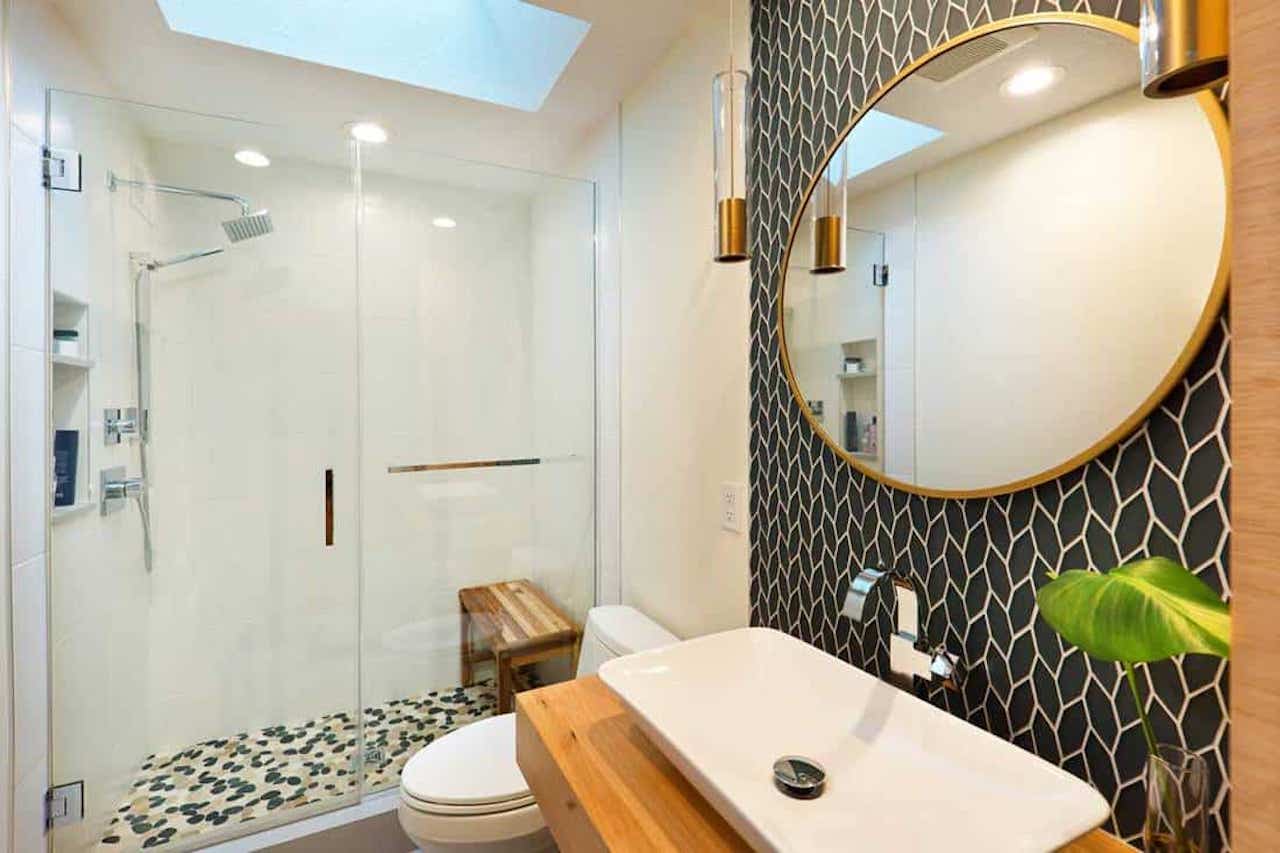
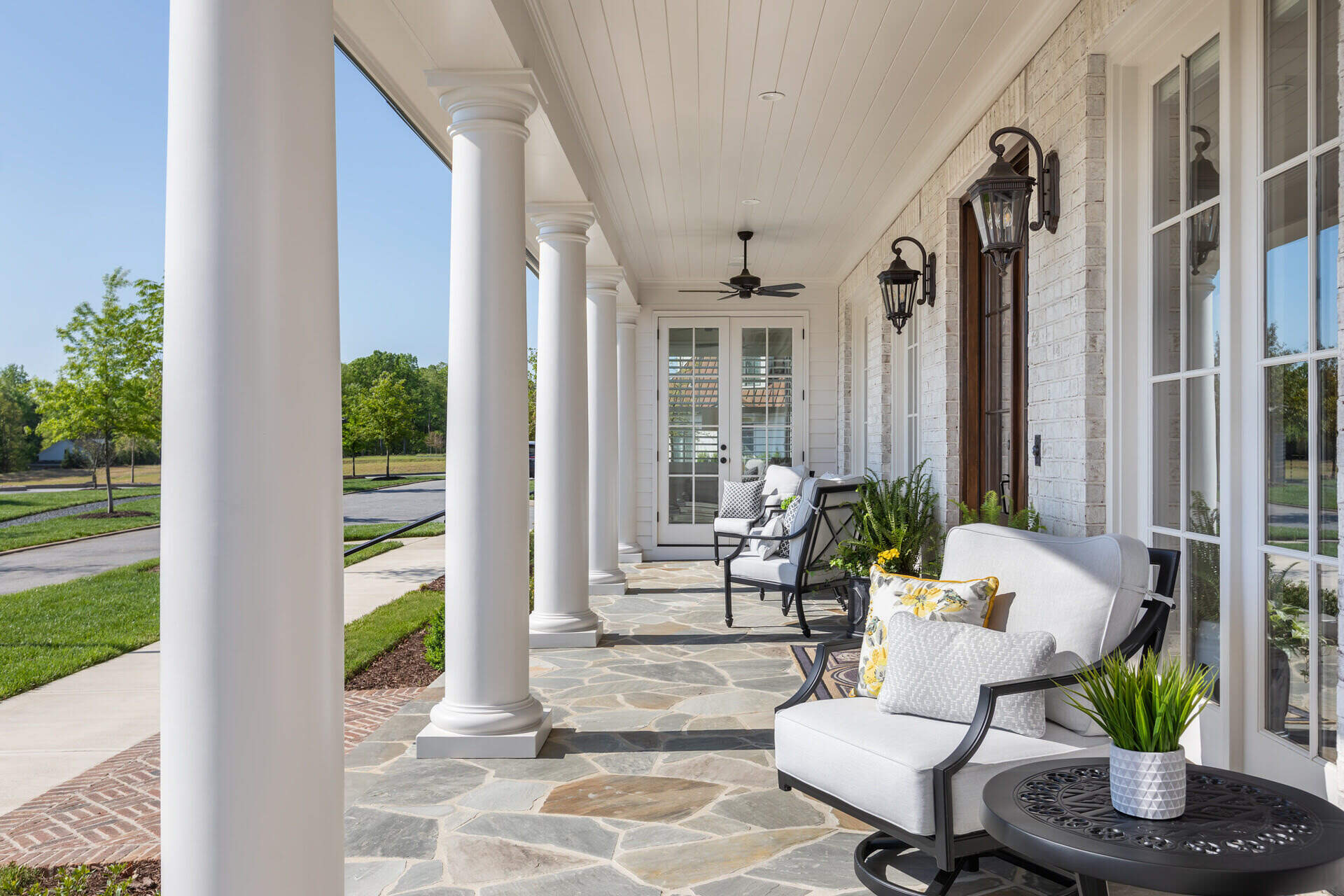

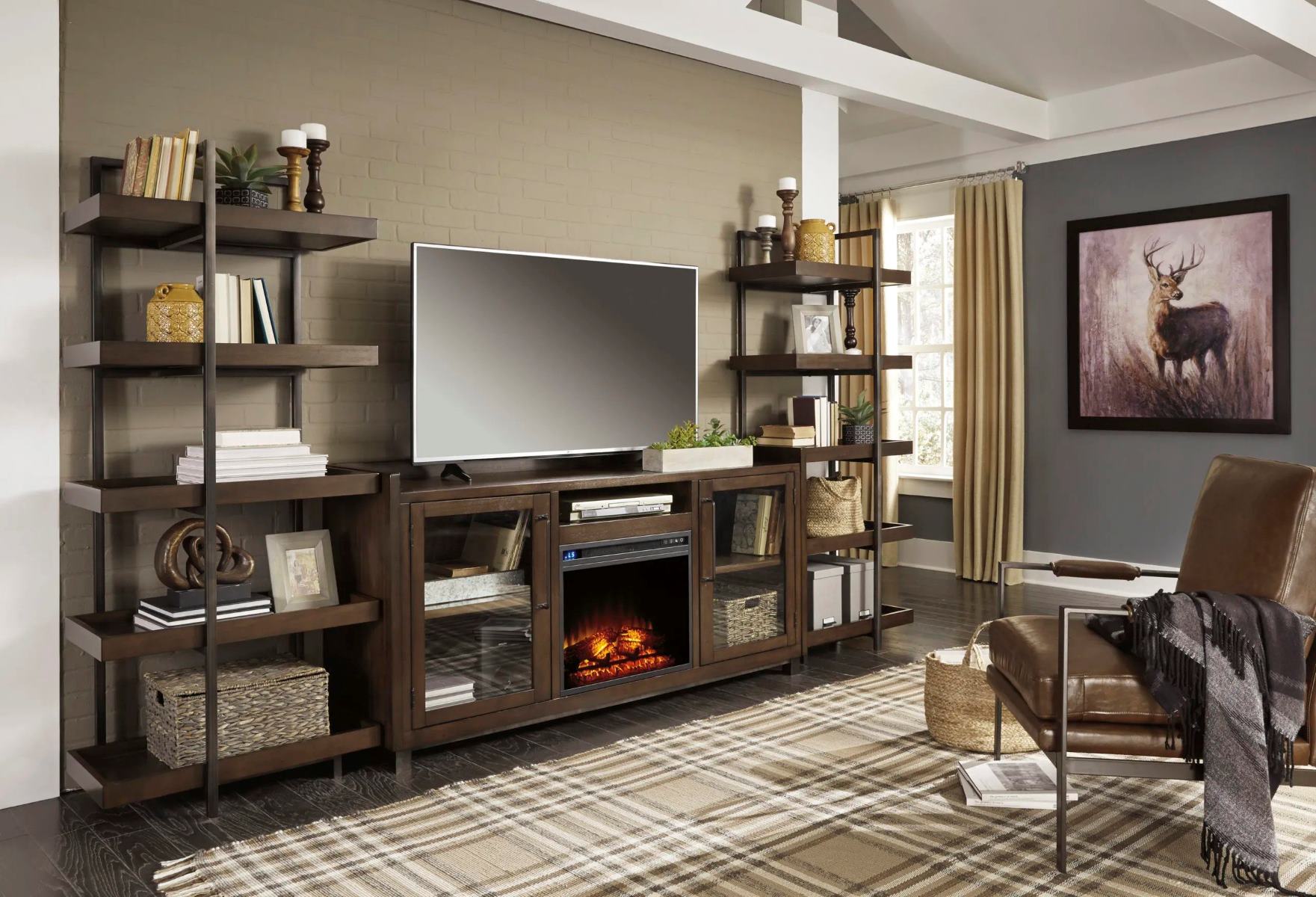
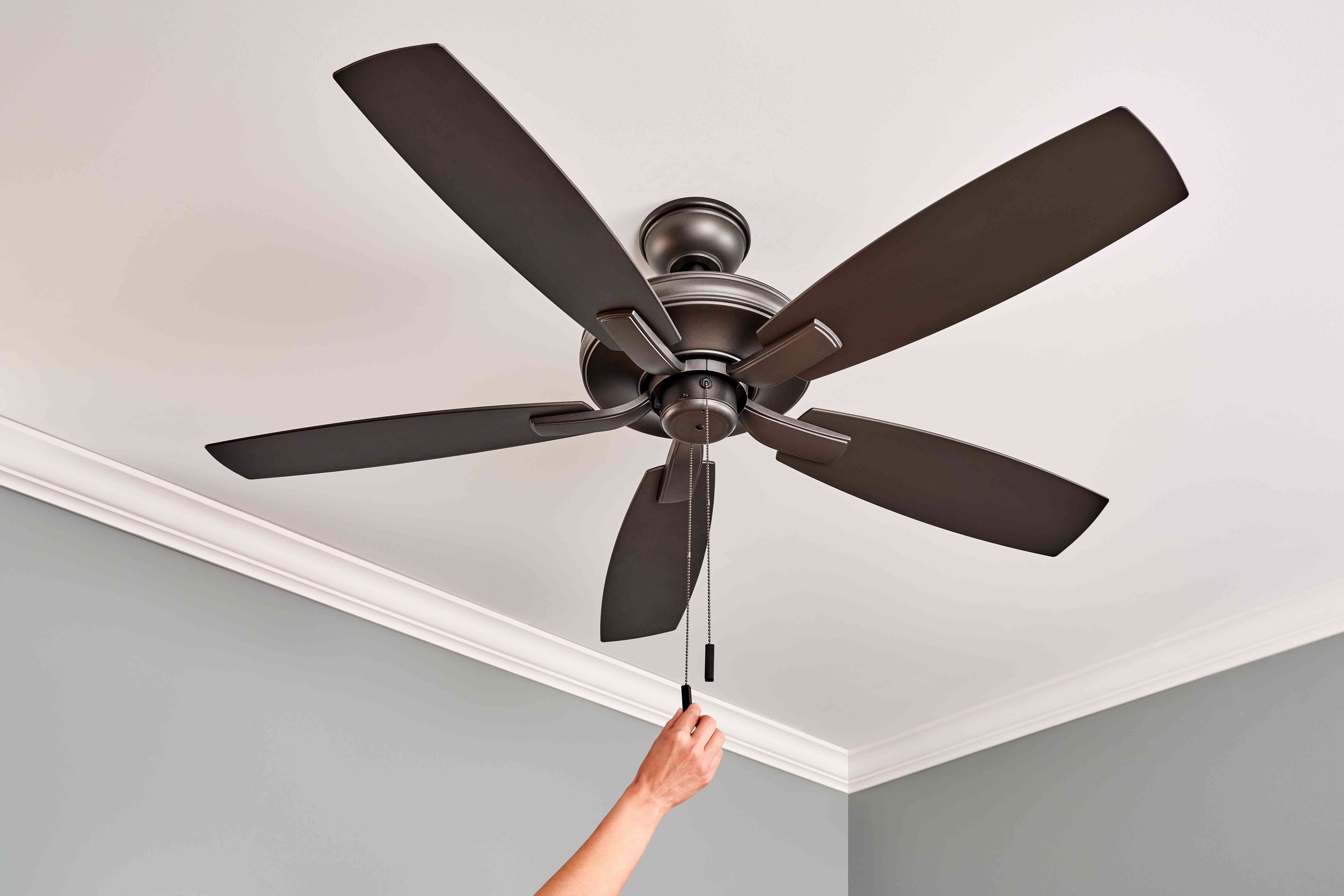

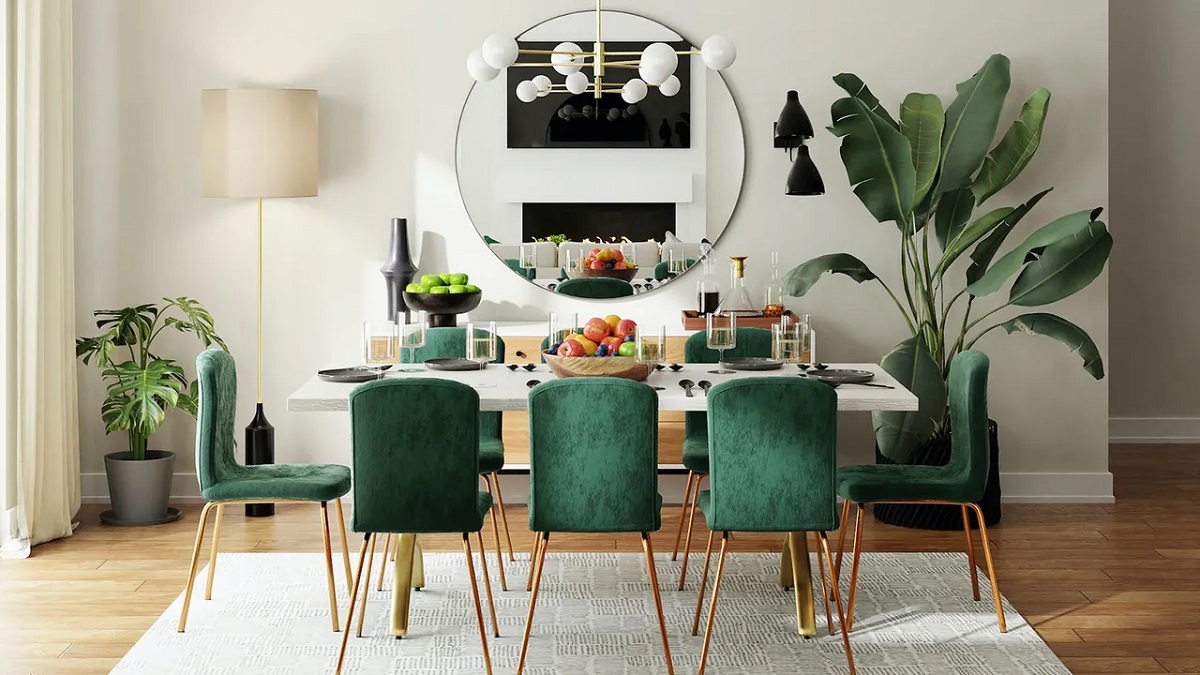

0 thoughts on “How Big Should Patio Be”